Abstract
Polymerase chain reaction (PCR) primers derived from a variable region of the 16S rRNA gene sequence were used to amplify DNA specifically from Ehrlichia chaffeensis (the recently proposed name for the etiologic agent of human ehrlichiosis). The 389-bp product defined by the specific primers was not detected when DNA samples from any of the other recognized species of Ehrlichia were used as amplification templates. When the PCR was applied to five suitable blood specimens obtained from patients subsequently shown to be serologically positive for E. chaffeensis, all five were positive. The same technique was applied to a total of six control blood specimens, three from febrile patients who had no serologic evidence of infection with Ehrlichia or Rickettsia species and three from patients diagnosed with Rocky Mountain spotted fever, and all six were negative. A chemiluminescent, group-specific oligonucleotide probe was shown to hybridize only with the PCR products obtained upon amplification of the five blood specimens from patients serologically diagnosed as having human ehrlichiosis. The results indicate that PCR, coupled with a nonisotopic method of confirming the identity of the PCR product, is a highly specific and efficient method of detecting the agent of human ehrlichiosis in blood. The results also suggest that E. chaffeensis is the sole etiologic agent of human ehrlichiosis in the United States. The technique was also applied to four ticks that were positive by direct immunofluorescence for Ehrlichia species, and one tick was PCR positive, indicating that E. chaffeensis DNA can be detected in ticks harboring this organism, although the sensitivity may be low.
Full text
PDF
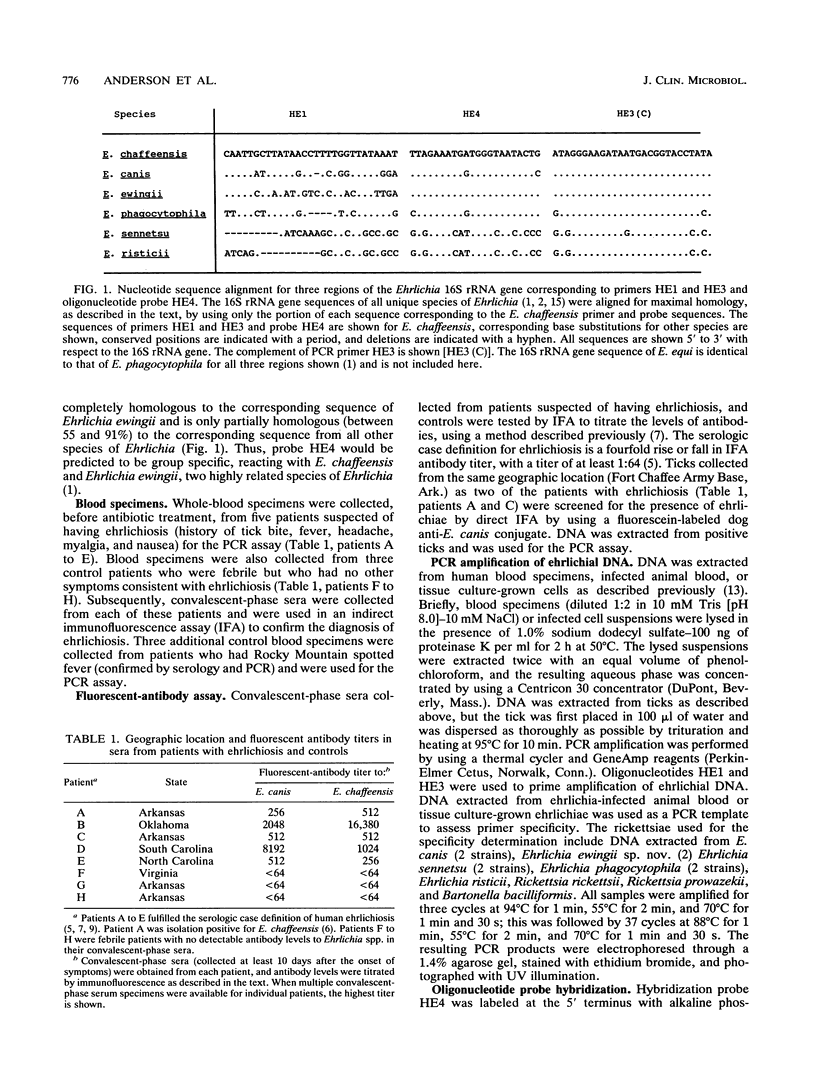
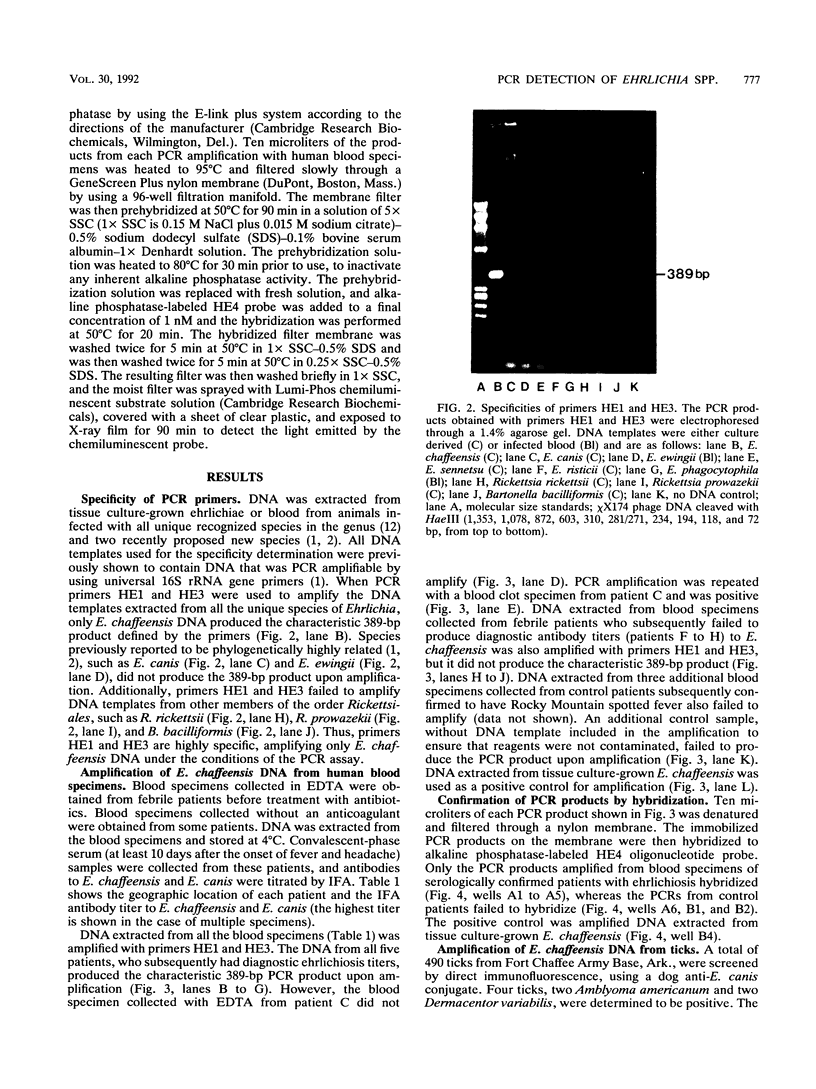
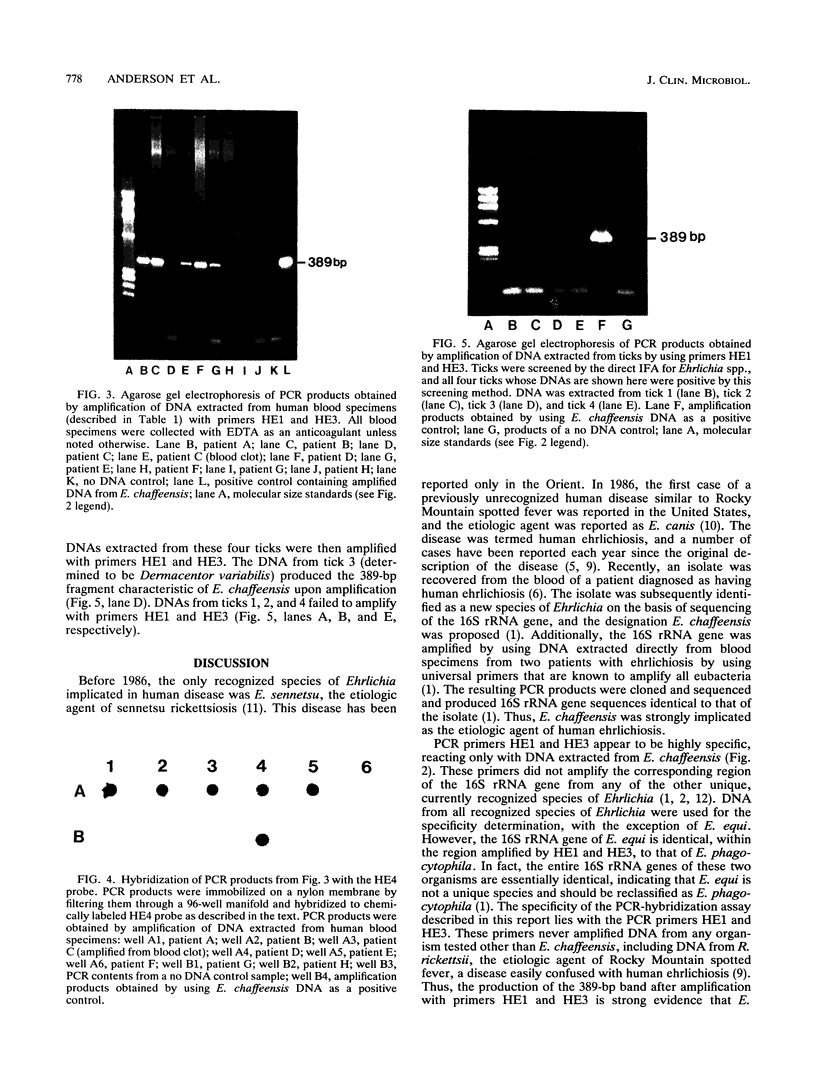
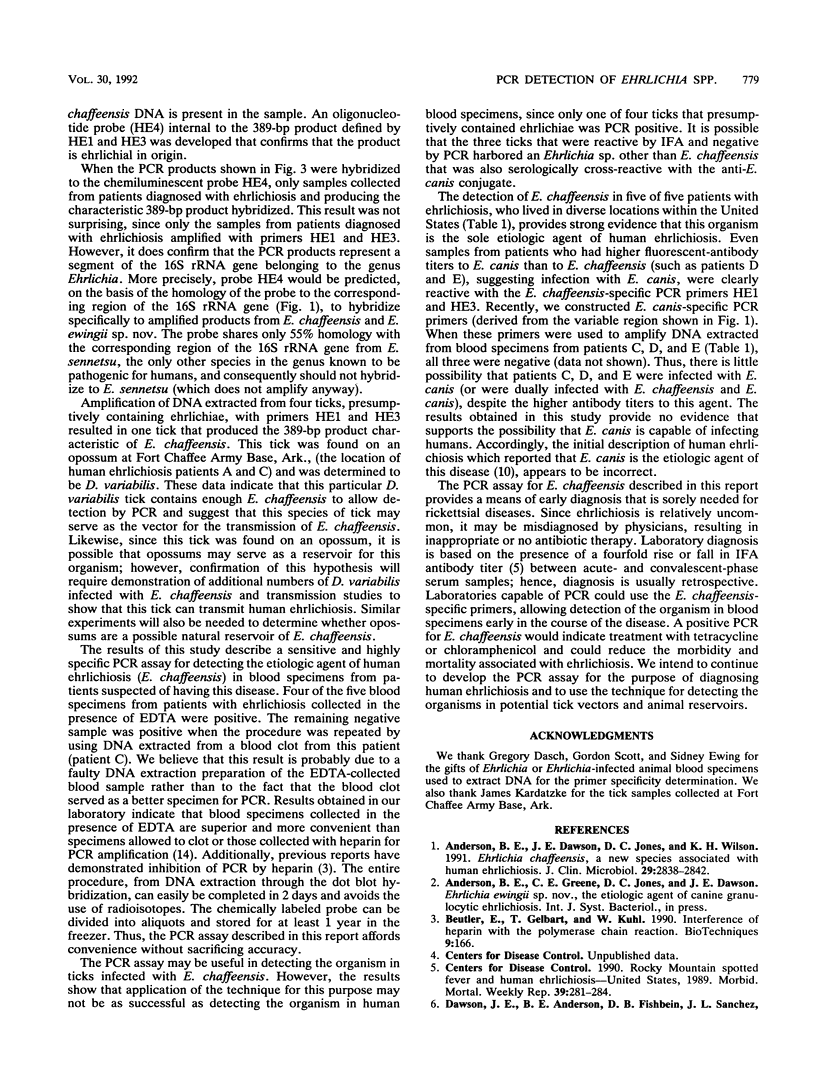
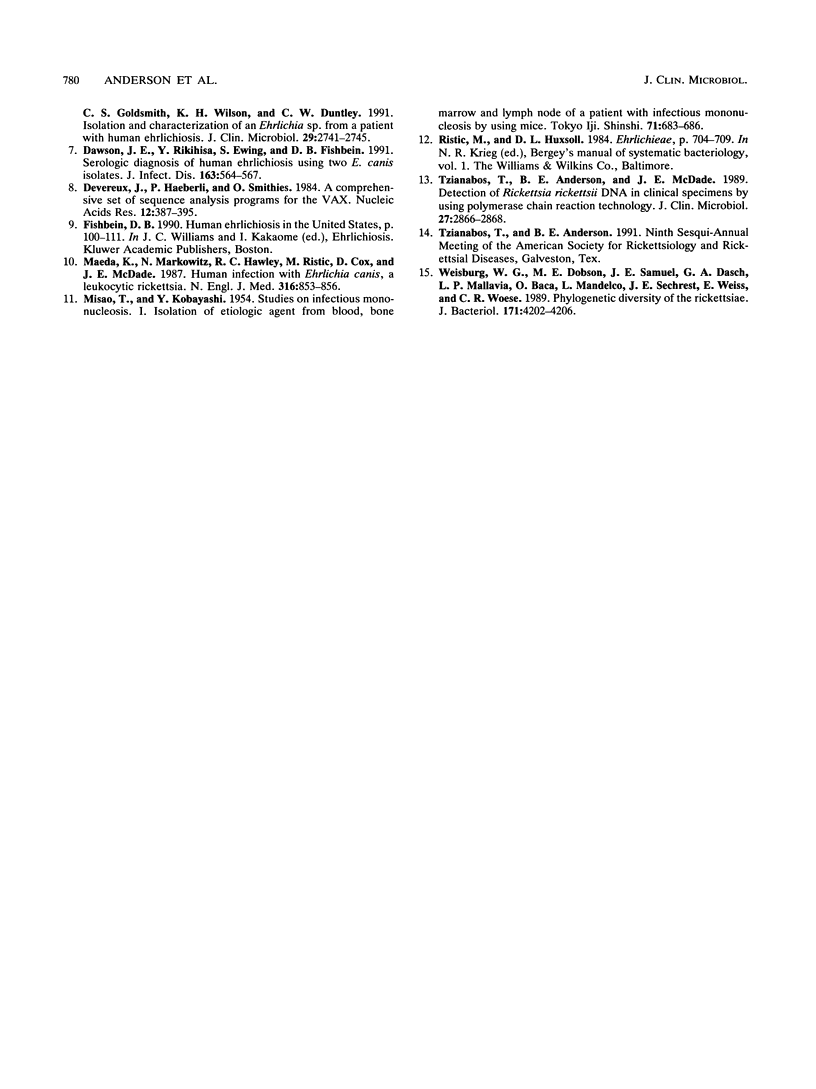
Images in this article
Selected References
These references are in PubMed. This may not be the complete list of references from this article.
- Anderson B. E., Dawson J. E., Jones D. C., Wilson K. H. Ehrlichia chaffeensis, a new species associated with human ehrlichiosis. J Clin Microbiol. 1991 Dec;29(12):2838–2842. doi: 10.1128/jcm.29.12.2838-2842.1991. [DOI] [PMC free article] [PubMed] [Google Scholar]
- Beutler E., Gelbart T., Kuhl W. Interference of heparin with the polymerase chain reaction. Biotechniques. 1990 Aug;9(2):166–166. [PubMed] [Google Scholar]
- Dawson J. E., Anderson B. E., Fishbein D. B., Sanchez J. L., Goldsmith C. S., Wilson K. H., Duntley C. W. Isolation and characterization of an Ehrlichia sp. from a patient diagnosed with human ehrlichiosis. J Clin Microbiol. 1991 Dec;29(12):2741–2745. doi: 10.1128/jcm.29.12.2741-2745.1991. [DOI] [PMC free article] [PubMed] [Google Scholar]
- Dawson J. E., Rikihisa Y., Ewing S. A., Fishbein D. B. Serologic diagnosis of human ehrlichiosis using two Ehrlichia canis isolates. J Infect Dis. 1991 Mar;163(3):564–567. doi: 10.1093/infdis/163.3.564. [DOI] [PubMed] [Google Scholar]
- Devereux J., Haeberli P., Smithies O. A comprehensive set of sequence analysis programs for the VAX. Nucleic Acids Res. 1984 Jan 11;12(1 Pt 1):387–395. doi: 10.1093/nar/12.1part1.387. [DOI] [PMC free article] [PubMed] [Google Scholar]
- Maeda K., Markowitz N., Hawley R. C., Ristic M., Cox D., McDade J. E. Human infection with Ehrlichia canis, a leukocytic rickettsia. N Engl J Med. 1987 Apr 2;316(14):853–856. doi: 10.1056/NEJM198704023161406. [DOI] [PubMed] [Google Scholar]
- Tzianabos T., Anderson B. E., McDade J. E. Detection of Rickettsia rickettsii DNA in clinical specimens by using polymerase chain reaction technology. J Clin Microbiol. 1989 Dec;27(12):2866–2868. doi: 10.1128/jcm.27.12.2866-2868.1989. [DOI] [PMC free article] [PubMed] [Google Scholar]
- Weisburg W. G., Dobson M. E., Samuel J. E., Dasch G. A., Mallavia L. P., Baca O., Mandelco L., Sechrest J. E., Weiss E., Woese C. R. Phylogenetic diversity of the Rickettsiae. J Bacteriol. 1989 Aug;171(8):4202–4206. doi: 10.1128/jb.171.8.4202-4206.1989. [DOI] [PMC free article] [PubMed] [Google Scholar]






